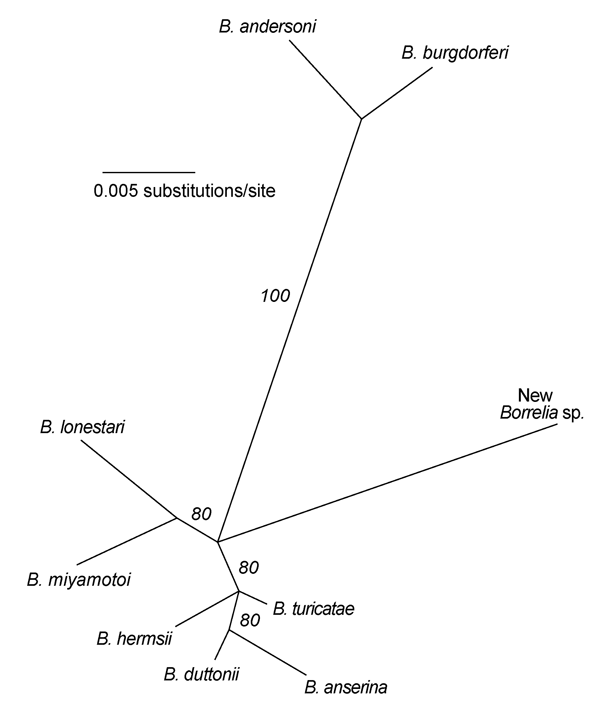Volume 11, Number 7—July 2005
Letter
Third Borrelia Species in White-footed Mice
Figure

Figure. . Unrooted maximum-likelihood phylogram for partial 16S rRNA gene sequences of selected Borrelia species, including a novel Borrelia organism, and representing Lyme borreliosis and relapsing fever groups. Sequence alignment corresponded to positions 1138 to 1924 of B. burgdorferi rRNA gene cluster (GenBank accession no. U03396). Maximum likelihood settings for version 4.10b of PAUP* (http://paup.csit.fsu.edu) for equally weighted characters corresponded to Hasegawa-Kishino-Yano model with an empirical estimate of transition/transversion ratio = 7. Support for clades was evaluated by 25 bootstrap replications by using branch-and-bound search, and values >50% are indicated along branches. Sequences (with GenBank accession nos.) used in the analysis were the following: B. andersoni (L46688), B. miyamotoi (D45192), B. lonestari (U23211), B. hermsii (U42292), B. turicatae (U42299), B. duttonii (U28503), B. anserina (U42284), and new Borrelia species (AY536513).